Uncategorized
How Crystals Are Formed
How Crystals Form
How do crystals form? In nature, crystals take shape when molecules come together to stabilize as a liquid cools and solidifies. This natural process, known as crystallization, occurs when magma hardens or when water evaporates from a natural mixture. Although many crystals begin small, they grow as more atoms join and establish a uniform, repetitive pattern. This is the natural process through which crystals come into existence.
Crystals exhibit a myriad of characteristics – sparkling, shimmering, soft and silky, or hard as flint – and each manifests in a kaleidoscope of shapes and colors. Over millions of years, crystals have emerged from the earth, and connecting with these gems offers a beautiful expression of our support and love for Mother Nature. It also serves as a means to welcome healing and higher vibrations into our lives.
Having been captivated by the kaleidoscopic beauty of crystals for years, we sought to delve into the intricate science behind their formation. To us, crystals represent a harmonious dance between art and science, reality and rare dreams. It is crucial to comprehend the fascinating journey these ancient gifts from the earth undergo, allowing us to respect and revel in the presence of these gems, whether adorning our wrists, in our hands, or occupying any space we designate for them. We embark on an exploration into the science behind the formation of crystals, uncovering the intricate details involved in creating these sublime stones.
What is a Crystal Really?
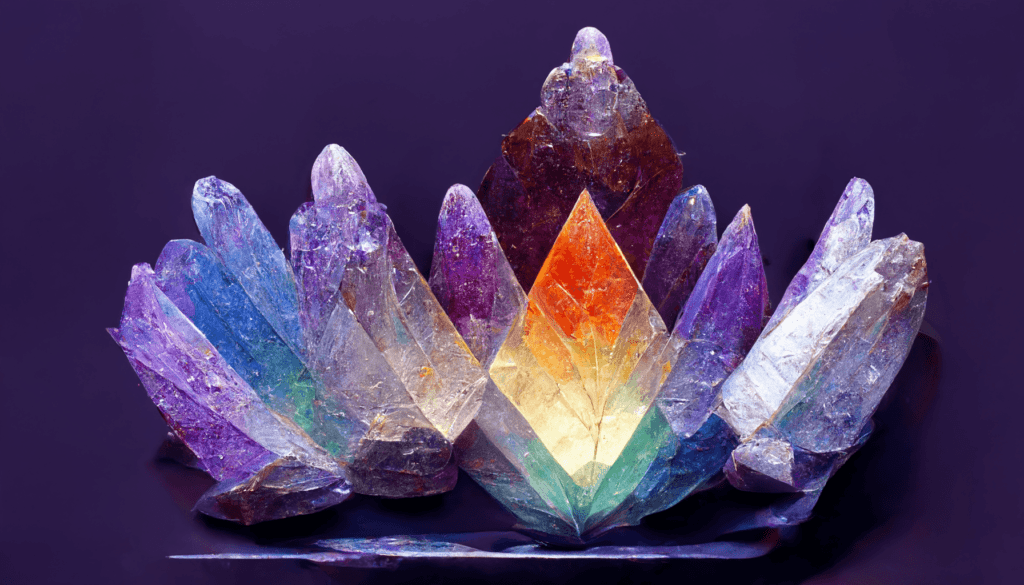
Mention the term crystal, and our minds immediately conjure images of dazzling geodes and precious gems like the delicate pink Rose Quartz and the stunning Amethyst. However, crystals are not confined to the vibrant stones that purify our chakras; they permeate various aspects of nature. The common thread among crystals is their organized crystal structure, characterized by a meticulous, grid-like arrangement of molecules. Every atom or ion in the structure has its designated position, and it is this repetitive configuration that classifies it as a crystal. This phenomenon is evident in a spectrum of substances, ranging from salt crystals and sugar crystals to graphite, ice crystals embedded within snowflakes, and the luminous quartz crystals adorning our altars.
The crystalline shape and pattern are ubiquitous in nature. Interestingly, the term “crystal” derives from the ancient Greek word Krustallos, which translates to both ice and crystal. The majority of minerals in the natural world exist in crystal form, and the specific shape contributes to the role of crystals. There are seven fundamental crystal shapes, also known as lattices: hexagonal, cubic, trigonal, triclinic, orthorhombic, monoclinic, and tetragonal. Variations in crystal shape provide insights into the repetitive pattern within the internal arrangement of atoms. However, finding perfectly shaped crystals in nature is a challenge, requiring flat surfaces and optimal conditions for growth. The diversity in crystallization is evident when comparing the distinct forms of blooming gypsum and blocky pyrite.
As mentioned earlier, the formation of crystals occurs as liquids cool, with molecules hastening to stabilize as the liquid solidifies into a tangible substance. Beyond the scientific perspective, there is profound beauty and truth in this process. The notion of atoms responding to rapid changes by channeling their energy to form robust and enduring bonds adds an additional layer of depth to the allure of crystals.
The Scientific Study of Crystals

The scientific exploration of diverse crystals is known as crystallography. This captivating branch of science explores the intricate aspects of crystal growth and formation. Researchers in this domain are intrigued by the atomic arrangement and molecular structures found in a wide array of materials and the functioning of atomic architecture. Encompassed within this field are various scientific disciplines, including chemistry, biology, physics, geology, and everything in-between. In essence, crystallographers delve into the mysteries of crystalline structure. This contrasts with mineralogy, which, instead of scrutinizing the internal structures and atom distribution, focuses on the physical properties of minerals or the chemical formulas that combine within specific stones. Numerous factors can influence the creation of crystals, ranging from environmental conditions to temperature, impacting how atoms organize themselves and consequently influencing light, colors, and texture within the crystal.
Common Crystals
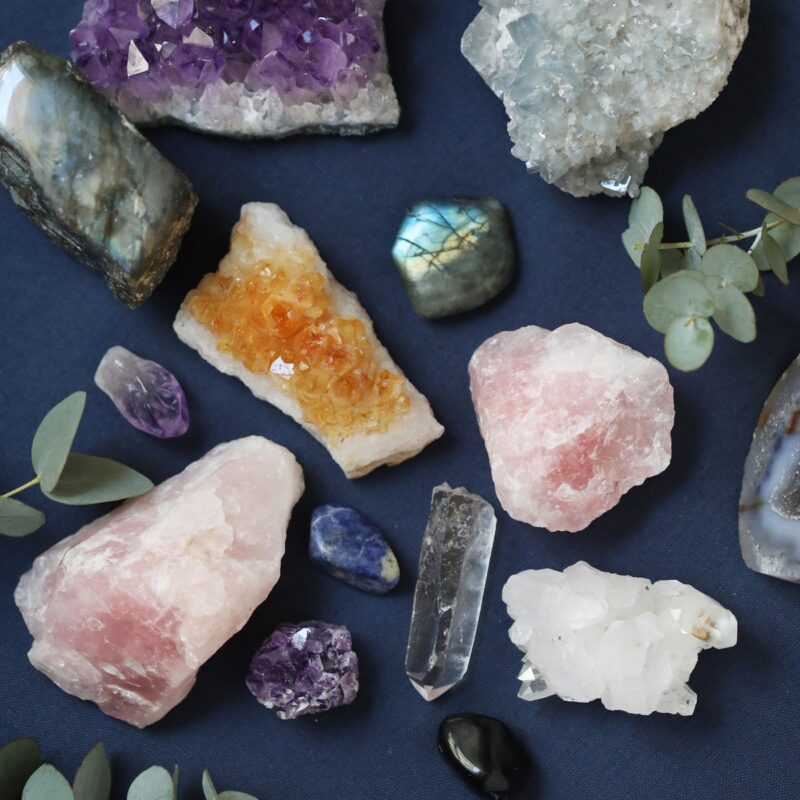
Explore our collection of Amethyst bracelets
A plethora of crystals exists, spanning from the widely seen common types to the exceptionally rare ones. Among the most recognizable crystals are –
Amethyst – classified as a type of quartz, this particular crystal showcases a purple hue, although quartz itself manifests in a diverse array of colors.
Calcite – a mineral composed of calcium carbonate.
Fluorite – a mineral consisting of calcium fluoride, characterized by its isometric form and an extensive spectrum of colors.
Garnet – a category of silicate minerals, exhibiting a variety of chemical compositions.
Underground Creation
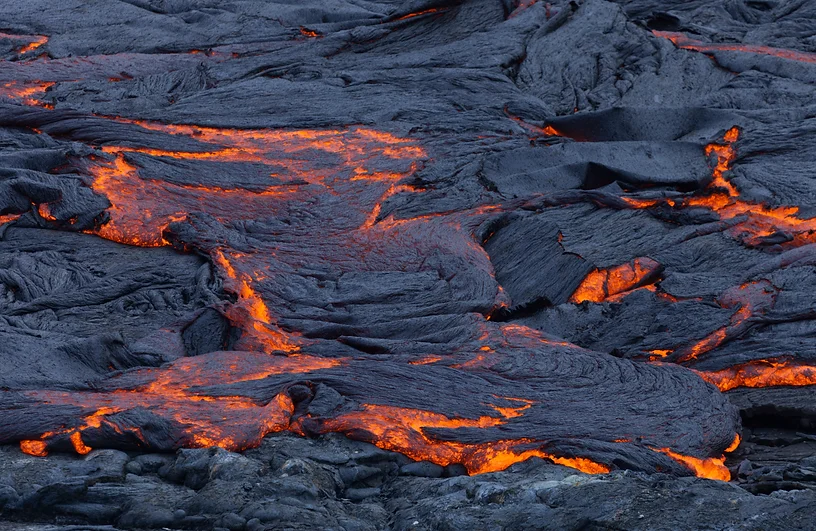
For individuals who have an appreciation for the concept of crystals originating from the Earth through millions of years, the subterranean crystallization process is exceptionally fascinating. Below the surface of the Earth, the crust unveils a completely distinct realm. Some sections are three miles thick, while others extend to 25 miles beneath the seabed. Beneath the crust lies the mantle, constituting over 80% of the Earth’s volume. The mantle is notably extensive, reaching nearly 2000 miles in thickness, and is composed of magma—a viscous, fiery red and orange fluid that occasionally erupts through the earth’s crevices, transforming into spewing lava. This molten rock amalgamates various minerals.
The junction where magma and crust converge is a dynamic, energetically charged location with constant movement. Portions of the crust detach and merge with the magma, inducing changes in the surrounding magma’s chemistry. The lower part of the crust, shaped by magma’s wear and tear, is riddled with nooks, crannies, and cavities, creating an ideal environment for crystal growth. Elevated pressures and temperatures set the stage, and when mineral-rich fluids permeate the crust’s fissures and crevices and subsequently cool, the process of crystallization commences.
Naturally, reaching a point where gemstones glimmer beneath our feet is a time-consuming process. Given the Earth’s inherent instability, numerous interruptions can impede the crystallization process.
How the Shifting Earth Affects Crystal Development
While crystals undergo growth within the cavities and cavernous regions of the crust, the surrounding environment remains anything but tranquil. Passageways form and may subsequently collapse due to shifts in the earth, halting crystal growth. Nevertheless, the crystal remains inactive, and upon another shift reopening the passageway, growth can resume. This intermittent process can imprint distinct colored zones on the crystals, result in a twinning effect in color composition, create new layers that do not entirely fuse, and foster the growth of different minerals upon each other as well.
Crystal Specimens Composed of Different Minerals
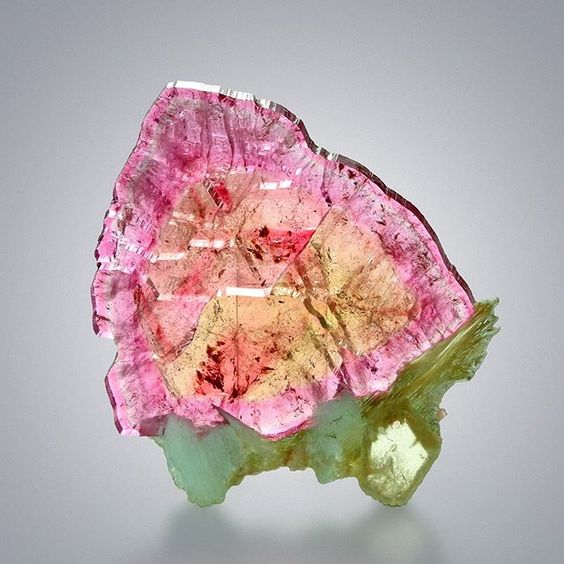
The occurrence of various minerals within the same crystal can be attributed to the closure and subsequent reopening of a cavity. The environment in which crystal growth takes place is inherently unstable, experiencing significant fluctuations in temperature, pressure, and chemical composition. When a passage within the crystal closes and later reopens, the newly introduced environmental factors can initiate the growth of an entirely different mineral crystal over the existing material. This phenomenon gives rise to stunning examples of layered colors and textures, as seen in specimens like watermelon tourmaline or fluorite.
Inclusions.
Gemstone inclusions may occur due to the opening and closing of voids. Occasionally, a new crystal initiates growth on an already established stone, only to have the process interrupted. Subsequently, if the conditions are conducive, the pre-existing crystal resumes growth, effectively engulfing the nascent crystal. Simultaneously, two different minerals may commence growth, evolving at distinct rates, leading to one crystal dominating and absorbing the other. This phenomenon is observable in emeralds, exemplified by the presence of pyrite fragments.
Temperature fluctuations and alterations in the environment can induce mineral impurities, which then undergo crystallization. In this scenario, the primary mineral acts as a cavity, allowing impurities to crystallize and expand within its walls and spaces. An illustration of this is rutile nestled inside a quartz crystal or corundum.
Impurities play a pivotal role in shaping crystals. A flawless diamond would consist solely of carbon atoms (and perhaps a few boron atoms). However, the introduction of impurities or the presence of the ‘wrong’ atom can alter the diamond significantly, differentiating a ruby from a sapphire.
Phantoms,
another natural occurrence, involve the transparent crystal receiving a new layer from another crystal growing over it. This occurrence is relatively rare, as the original transparent crystal may continue growing, forming a new layer of quartz and leaving a ghostly or shadowy imprint of the other crystal beneath the surface.
Healing Fractures
In the tumultuous realm of the earth’s core, characterized by fire, energy, cracks, and collapses, crystals face challenges during growth, often resulting in breakages or fractures. Materials can seep into these fractures, facilitating the healing of the crystal and reestablishing its bonds. These mended fractures, recognized as “fingerprints” by geologists, create a cohesive space for the crystal to fuse and grow anew.
Geological Processes and Gem Formation
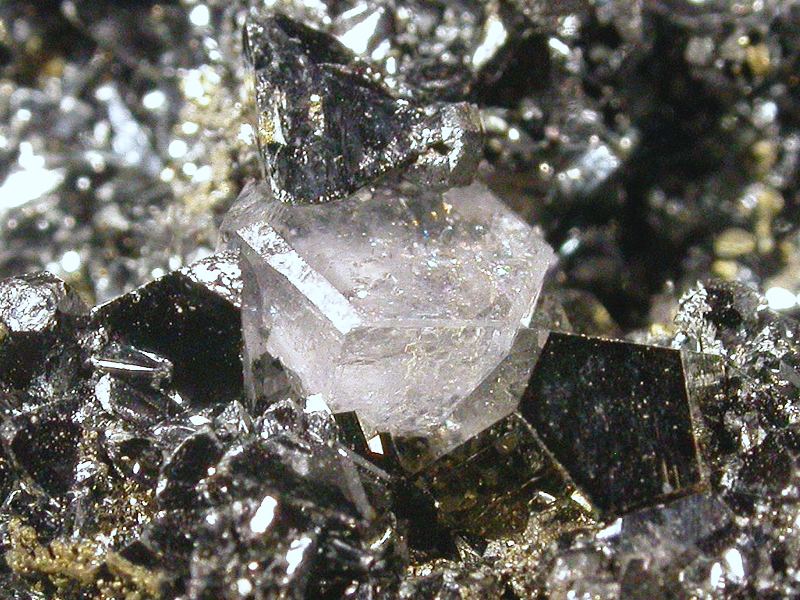
After exploring the hidden mysteries beneath the Earth’s surface, geologists possess a comprehensive understanding of the mechanisms governing gem formation. This knowledge proves invaluable in replicating specific environments in laboratories to reproduce conditions for the creation of synthetic gems. Traditionally, three distinct processes contribute to the formation of rocks.
- Igneous rocks originate deep within the Earth due to elevated temperatures.
- Metamorphic rocks result from alterations in pressure and temperature, causing the transformation of existing rocks into new forms.
- Sedimentary rocks form through the accumulation of sediment deposits.
In the contemporary era, geologists acknowledge four processes influencing rock formation.
- Molten rock and associated fluids
- Gem formation occurring in the Earth’s mantle
- Changes in environmental conditions
- Influence of surface water
A Closer Look at Quartz

The formation of crystals involves a complex interplay of various factors, operating beneath the surface in intricate ways. A crystal, starting as a mere seed, can undergo branching, stacking, stretching, and blooming as atoms interconnect and grow. This transformative process is not limited to the influence of fire alone; it also involves the depths of water, the steam of gas and vapor, and melted rock. Certain crystals, like quartz, require both heat and water for their formation, making quartz a widely recognized and cherished crystal variant.
Quartz, often one of the final minerals to crystallize, fills gaps in spaces where other minerals have already formed. When created within rock cavities, it typically takes on a hexagonal crystal structure, whereas formations deep within the earth result in smaller, rounder masses.
Although quartz is generally colorless, its hue is derived from the reflection of surrounding minerals. Colored variations of quartz obtain their shades from ‘impurities’ embedded within them. The term ‘impurity’ may be misleading, as these unique contaminants contribute significantly to the crystals’ personality, influencing color, texture, and the interplay of shadow and light. For instance, Amethyst acquires its stunning purple color from the inclusion of iron oxide or manganese, while citrine adopts its golden shades from the overheating of Amethyst.
Another fascinating aspect of crystal growth lies in the absence of restrictions on the size a single crystal can attain. A notable example is found beneath a Mexican town, where one of the world’s largest crystals, a massive Selenite chunk, stretches 12m in length with an impressive diameter of 4m. Estimated to be around half a million years old, this colossal crystal serves as a reminder that, given ample space and time, crystals can thrive and grow without limitations.
Final Thoughts
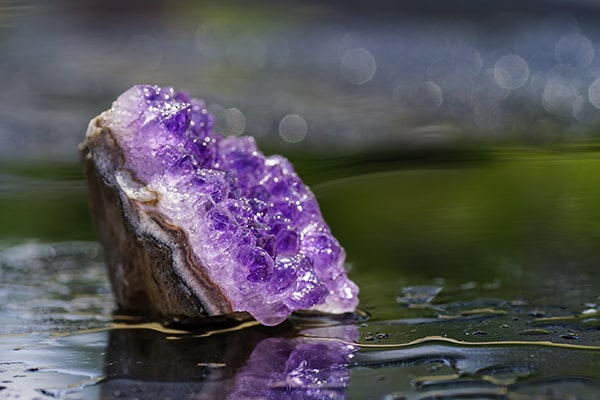
The creation of crystals is an expansive and intricately complex realm due to the fact that a solitary fluid possesses seemingly limitless possibilities in terms of its ability to transform and expand. The emergence of crystals can unfold in numerous ways, all subject to the conditions within the Earth’s innermost environments. Crystals epitomize nature’s spectacle, shaped by the dynamic interplay of energy forces. They originate from a state of chaos, undergoing transformation as the potential for rearrangement solidifies into a tangible form.
Each crystal possesses a distinctive vibrational frequency, playing a significant role in its capacity to alleviate blockages in the chakras and elevate our own frequencies, leading to heightened spiritual bliss. Brimming with energy, as ancient as time itself, and harboring the universe’s mysteries, crystals navigate the boundary between scientific understanding and spiritual realms.


